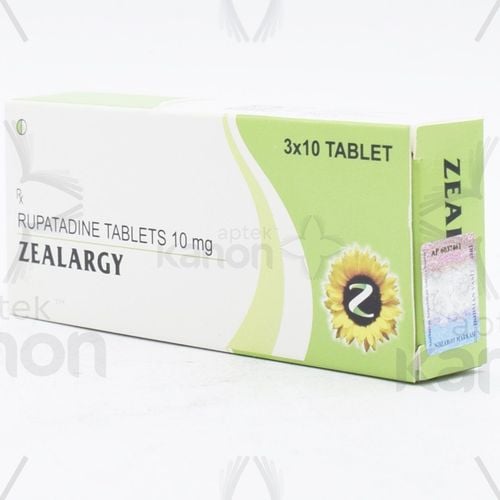This is an automatically translated article.
Aritofort is made in the form of tablets, containing the main ingredient is loratadine 10mg. The drug is known for its main use as an antihistamine and anti-allergic. The following article will help you add more useful information about the drug Aritofort.
1. What are the effects of Aritofort?
The active ingredient loratadine contained in Aritofort belongs to the second generation antihistamine group, only having peripheral H1 receptor antagonist effects without affecting the central nervous system. Therefore, Aritofort only relieves symptoms when the body releases a lot of histamine in allergy-related diseases, but does not have a sedative effect.Aritofort is often used with the main indications such as:
Alleviating the symptoms of allergic rhinitis such as sneezing, runny nose, ... Reducing the symptoms of urticaria such as rash, itching, ... Reduce symptoms of allergic conjunctivitis such as itchy eyes, watery eyes, ...
2. Dosage and usage of Aritofort
Aritofort can be used by adults and children 2 years of age and older. The recommended dose of Aritofort for people over 12 years of age is 10mg/day.
For children from 2 to 12 years old: If the weight is over 30kg, the dose is 10mg/day. If the weight is less than 30kg, the dose is 5mg/day.
Dosage adjustment based on creatinine clearance is required for patients with impaired renal or renal function. Specifically, if the creatinine clearance is less than 30ml/min, the dose is 10mg/time, once every 2 days.
3. Aritofort side effects
Patients treated with Aritofort with doses above 10mg/day may experience side effects such as:
Headache, dizziness Heart palpitations Dry mouth, nausea Dry nose, sneezing Conjunctivitis Urticaria No menstrual period Tell your doctor right away if the side effects of Aritofort affect your activities and life. Complying with the instructions of the doctor and pharmacist about the dose, not self-administering the drug is also a way to reduce unwanted symptoms when using Aritofort.
4. Aritofort drug interactions
When Aritofort is used concurrently with cimetidine, the blood concentration of loratadine will increase by about 60% due to the ability of cimetidine to inhibit the metabolism of loratadine.
In addition, ketoconazole and erythromycin also increase the concentration of Aritofort when used concurrently. The main reason comes from the ability of ketoconazole and erythromycin to inhibit the enzyme CYP3A4.
All of these drug interactions do not manifest into clinical signs or symptoms. Therefore, you should actively inform your doctor about the medications you are taking before receiving treatment with Aritofort.













